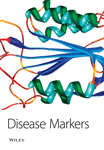Frequency of P16INK4a and P14ARF Genes Methylation and Its Impact on Bladder Cancer Cases in North Indian Population
Abstract
Introduction: Amongst the genitourinary cancers, carcinoma of the urinary bladder is one of the leading causes of death in India. Hypermethylation of the CpG islands of gene promoter is one of the earliest and most frequent epigenetic alterations leading to cancer as well as in its development. Several studies have suggested that tumour suppressor genes play a key role in the development of cancer. Methylation in the CDKN2A has been associated with various malignant diseases, but information with respect to urinary bladder cancer is lacking in north Indian population.
Materials and methods: We analyzed the methylation of P16INK4a and P14ARF in 80 tissues and matched blood samples of patients suffering from bladder cancer and 80 blood samples of cancer-free individuals by MS-PCR.
Results: In tissue and matched blood samples of bladder cancer patients, the incidence of P14ARF hypermethylation significantly increased (OR = 0.31, 95%CI = 0.12–0.8, P = 0.01) and (OR = 0.0, 95%CI=0.0–0.62, P = 0.006) respectively with an increase in age. Clinicopathological analysis revealed that P14ARF hypermethylation in tissue and blood samples was significantly associated with invasive stage (≥ T2) (OR = 0.21, 95%CI = 0.08–0.51, P = 0.0002) and (OR = 0.09, 95%CI = 0.03–0.37, P = 0.00001) respectively. Muscle invasive tumour stage (≥T2) showed significant association with increased risk of P16INK4α promoter hypermethylation in tissue and blood samples of patients (OR = 0.38, 95%CI = 0.17–0.82, P = 0.01) and (OR = 0.13, 95%CI = 0.05–0.36, P = 0.00005) respectively.
Conclusion: These results suggest that the CpG island hypermethylation status of the defined panel of genes may be a useful biomarker in patients suffering from bladder cancer.




